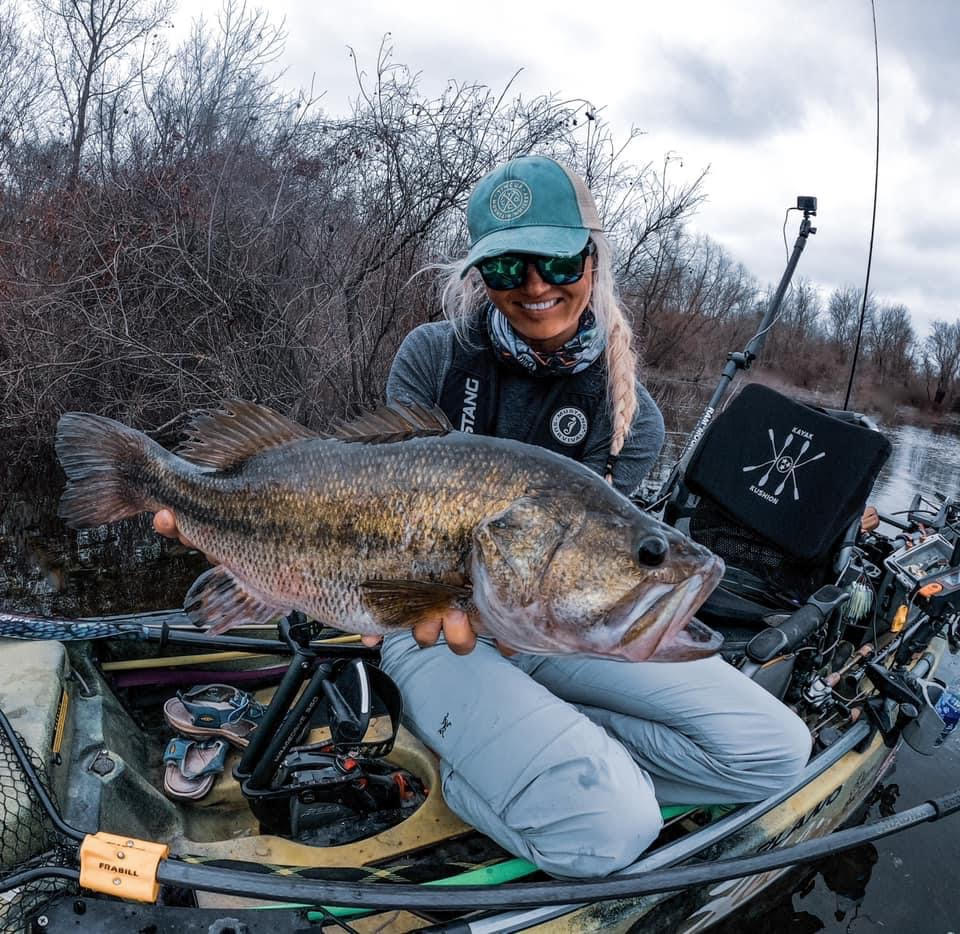We may earn revenue from the products available on this page and participate in affiliate programs. Learn More ›
Most bass anglers of any experience level know they should bring a variety of lures along in their tackle. You never know exactly what will trigger a bronze back or largemouth to bite, so it’s smart to have an assortment of baits to crank. But how much does your bait color really matter when it comes to boating big bass? It’s a question I get a lot, and I’ll be frank: Color can make or break your trip.
You need to match your bait color to what’s going on in the waters you’re fishing during the time of year. If that sounds difficult, it really isn’t. Here is what you need to know.
Bass Key on Crayfish in Spring
In early spring, or when water temperatures reach around 50 degrees, crayfish come out of their winter dwellings and begin searching for a mate. During this time, male crayfish become increasingly vulnerable, as its one of the few times they crawl on the tops of rocks. This uptick in activity is the reason Rayburn Red, Fire Craw-colored chatterbaits, and other crawfish imitations fly off the shelves in the early spring. Bass key in on crayfish this time of year, and anglers should follow suit.
Track the Shad and Bream Spawn
Shad are another key player when it comes to forage, especially during the shad spawn. Anglers will want to have a variety of shad colors (usually white or off white) to maximize success doing this period. The same can be applied to the bream spawn. When big bass are keyed in on bream, anglers will often dip the tails of their baits in chartreuse to emulate the bream. Also, this is one of the few exceptions where I’d have a frog tied on that wasn’t white or black, but rather, bluegill colored. I can’t guarantee you’ll hook into a bass, but it could be the difference in a few bites, and sometimes it only takes one bite to change the course of your day.
Water Clarity and Weather Are a Major Factor
In addition to matching the hatch, water clarity can play a big role when it comes to choosing bait color. When dealing with clearer water, sticking with natural colors such as green pumpkins, watermelons, and other natural shad imitations are going to be most effective. Conversely, when dealing with stained water, anglers are going to want to choose colors that are more visible to their quarry. Bright colors such as chartreuse and white are going to serve you better than natural colors, but your blacks and blues are going to be the most visible options for the fish in these conditions.
Weather can also play a big role in what color you select. On overcast days, you’ll often see anglers throwing spinnerbaits with matte blades, as opposed to shiny blades, for a more muted appearance. Shiny blades reflect the sunlight much like bait does, making them a go-to for anglers on sunny days.
Don’t Go Overboard Picking the Right Bait Color
We all know an angler with the same jig in 14 different colors. He had success with that bait one time, and bought the whole lot. It’s easy to become too wrapped up in bait colors, especially with hundreds of options from manufactures. A good rule of thumb for any bass angler looking to have success is to keep it simple. When it comes to soft plastics, have a few light, natural-colored baits, and a few dark options. With reaction baits, stick to your staple colors—white, chartreuse, and red—and experiment a little within those options.
Remember, there are times when color can make a difference, but more often than not, all the crazy options are intended to catch the angler, not necessarily the fish.

